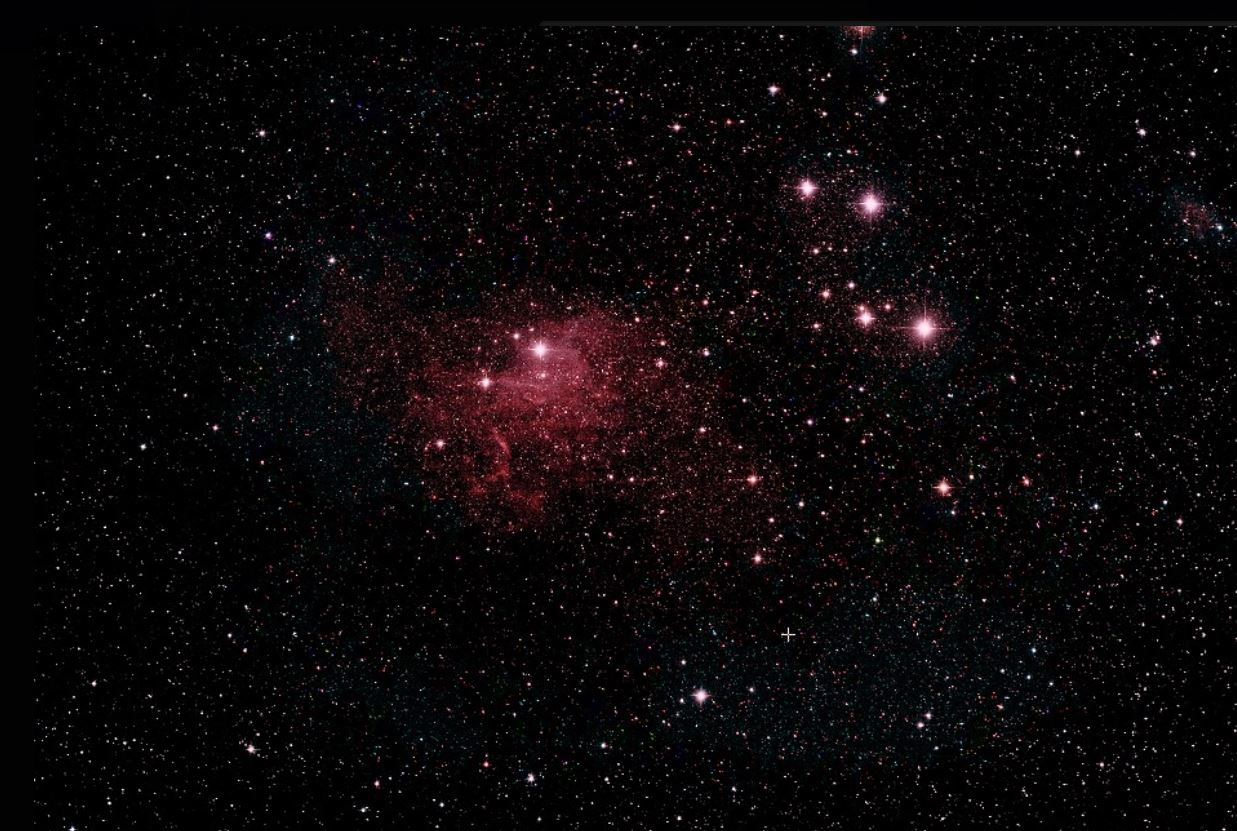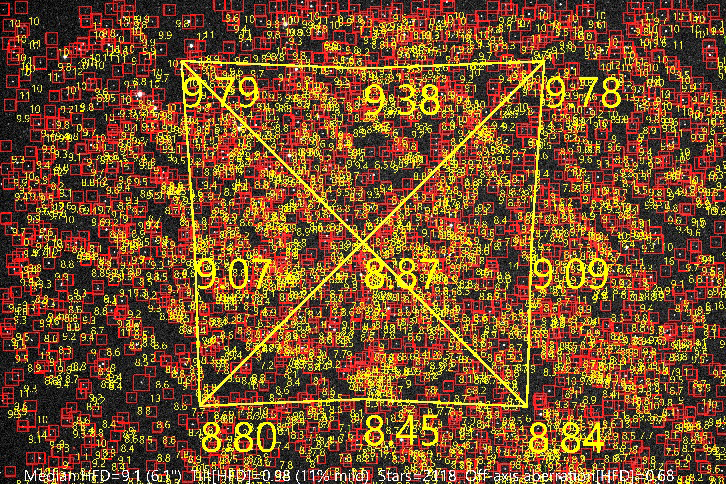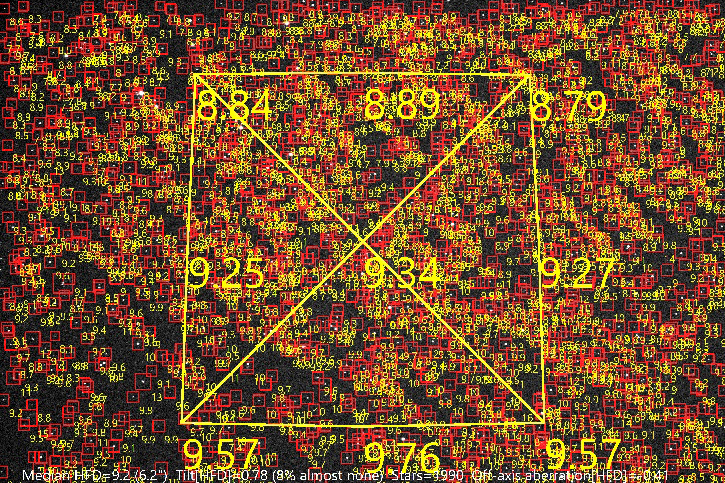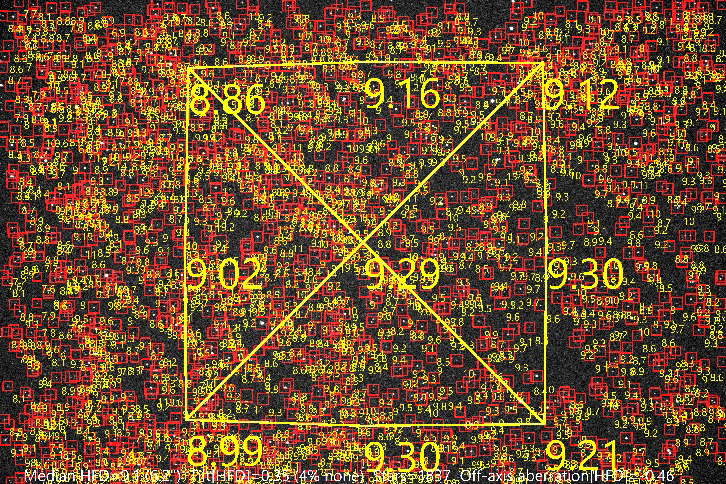It took me about 9 months to more or less tame my TS PowerNewt (a carbon fiber F4 Newtonian with a 0.73x focal reducer). The key insights I got from others were
1. That you can't diagnose tilt or really even corrector spacing until you have the collimation dead on, and
2. That the peep hole of your autocollimator should be the same distance from the secondary mirror as your camera's detector to avoid parallax error.
I've got these mostly under control now but still have a little residual problem with getting round stars. In the attached, the stars coma "around" the upper corners of the picture, toward the center of the picture in the lower right, and are pretty round in the lower left.
I've tried to fine tune this with the "defocused star" method described by many (and which works well for my SCT), but it invariably gives me worse results than sticking with the collimation determined with my autocollimator. So when I take my first image for the night, there is no way to "fine tune" except to try the autocollimator again, which is difficult to do with a flashlight.
I was wondering how others handle this. I'm using the autocollimator very carefully and lining up the multiple reflections of the triangle on my mirror very carefully, but the method doesn't seem quite precise enough for F2.8. How would I know if the residual issues are tilt or inadquate collimation? And are those really two different things or just different ways of saying that the plane of the sensor isn't parallel to the plane of the mirror? Is a tilt corrector really just a method for fine tuning collimation from the other end of the optical train?
1. That you can't diagnose tilt or really even corrector spacing until you have the collimation dead on, and
2. That the peep hole of your autocollimator should be the same distance from the secondary mirror as your camera's detector to avoid parallax error.
I've got these mostly under control now but still have a little residual problem with getting round stars. In the attached, the stars coma "around" the upper corners of the picture, toward the center of the picture in the lower right, and are pretty round in the lower left.
I've tried to fine tune this with the "defocused star" method described by many (and which works well for my SCT), but it invariably gives me worse results than sticking with the collimation determined with my autocollimator. So when I take my first image for the night, there is no way to "fine tune" except to try the autocollimator again, which is difficult to do with a flashlight.
I was wondering how others handle this. I'm using the autocollimator very carefully and lining up the multiple reflections of the triangle on my mirror very carefully, but the method doesn't seem quite precise enough for F2.8. How would I know if the residual issues are tilt or inadquate collimation? And are those really two different things or just different ways of saying that the plane of the sensor isn't parallel to the plane of the mirror? Is a tilt corrector really just a method for fine tuning collimation from the other end of the optical train?







